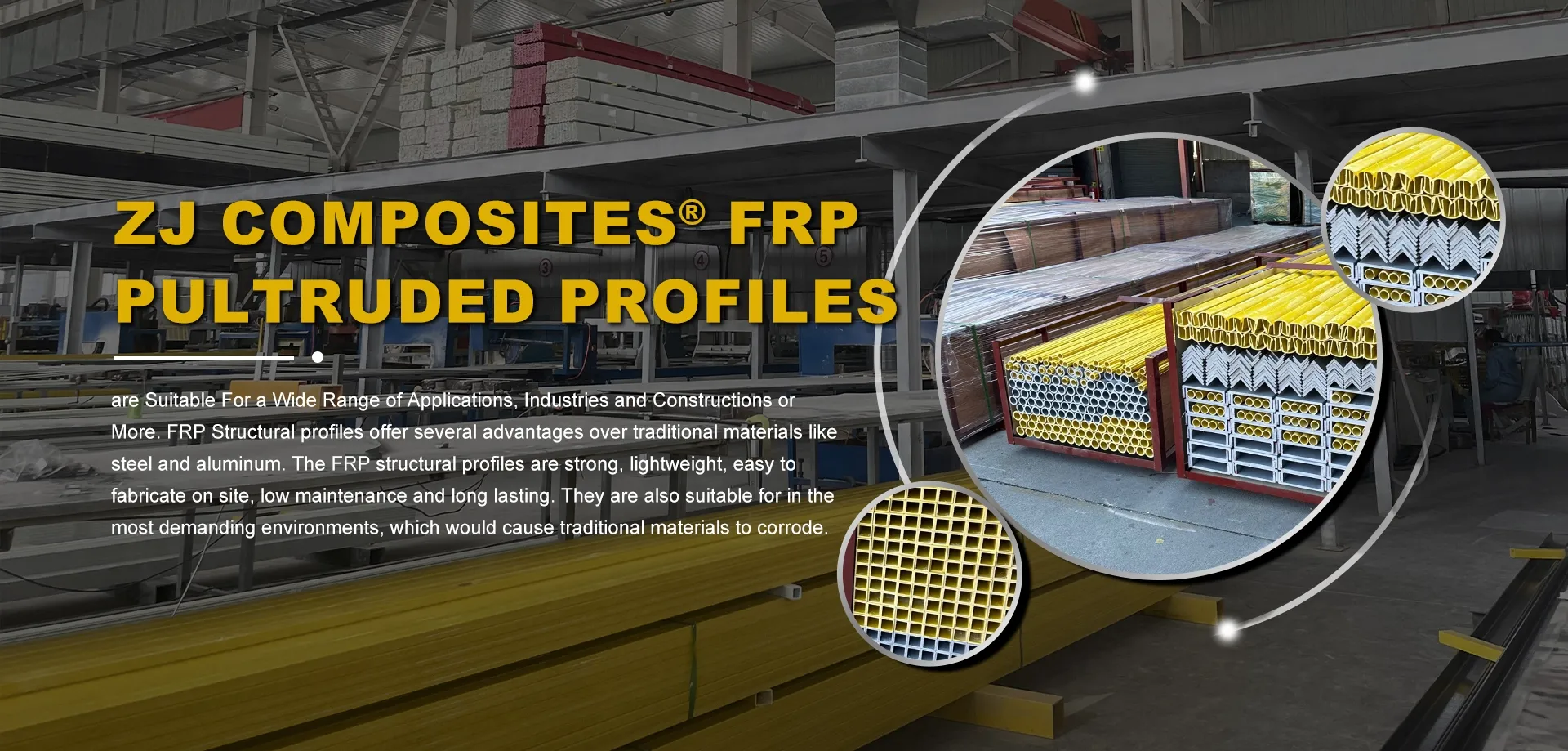loading...
- No. 9, Xingyuan South Street, Dongwaihuan Road, Zaoqiang County, Hengshui, Hebei, China
- admin@zjcomposites.com
- +86 15097380338
- Welcome to visit our website!
Exploring the Benefits and Applications of Grating in FRP Technology
Understanding Grating in the Context of FRP (Fiberglass Reinforced Plastic)
Grating, a term often associated with various industrial and architectural applications, refers to a grid-like structure designed to provide support and drainage while allowing light and air to pass through. In a more specialized context, grating made from Fiberglass Reinforced Plastic (FRP) has garnered significant attention due to its unique properties and advantages over traditional materials like steel and wood.
FRP is a composite material consisting of a polymer matrix reinforced with fibers. It combines the best characteristics of both materials—strength and stiffness from the fibers, and corrosion resistance, lightweight nature, and design flexibility from the plastic. When incorporated into grating applications, FRP offers several compelling benefits.
Understanding Grating in the Context of FRP (Fiberglass Reinforced Plastic)
Moreover, the lightweight nature of FRP grating presents logistical advantages. Compared to steel, FRP grating is considerably lighter, making it easier to handle and install. This not only reduces labor costs but also minimizes the need for heavy lifting equipment. For projects in remote or difficult-to-access locations, this quality can be particularly advantageous as it simplifies transportation and installation processes.
grating frp

Furthermore, the design versatility of FRP grating allows for customization in various applications. The material can be molded into different shapes and sizes, enabling designers and engineers to create grating systems that meet specific performance requirements. This flexibility is especially beneficial in architectural projects where aesthetics play a crucial role; FRP grating can be manufactured in various colors and patterns, providing not just functionality but also stylistic appeal.
Another significant feature of FRP grating is its fire resistance. Many FRP materials are designed with flame-retardant properties, ensuring that they meet stringent fire safety standards. This makes FRP grating an excellent choice for the construction of walkways, platforms, and other structural components in industrial settings where fire safety is a top priority.
In addition to its mechanical and physical properties, FRP grating also helps improve safety in industrial environments. The material can be designed with slip-resistant surfaces, reducing the risk of accidents in wet or oily conditions. This safety feature is essential in workplaces where employees navigate through challenging environments, such as construction sites or manufacturing facilities.
Another noteworthy aspect of FRP grating is its longevity. With minimal maintenance requirements, FRP grating can last for many years without significant degradation, providing long-term value for users. By contrast, traditional grating materials might require regular upkeep, including painting, sealing, or replacement due to corrosion or wear.
In conclusion, grating made from Fiberglass Reinforced Plastic represents a significant advancement in industrial and architectural applications. Its corrosion resistance, lightweight nature, design versatility, fire resistance, and long lifespan make it an attractive alternative to traditional materials. As industries continue to seek sustainable and efficient solutions, FRP grating is poised to play an essential role in enhancing safety, performance, and aesthetics across various sectors. Embracing such innovations can lead to safer working environments while promoting sustainability in materials use, ensuring a better future for industrial design and construction.
-
GRP Structures: The Future of Lightweight, High-Performance EngineeringNewsJun.20,2025
-
FRP Water Tank: High-Performance Storage for Corrosive and Clean Water SystemsNewsJun.20,2025
-
FRP Square Tube: The New Industry Standard for Chemical and Structural ApplicationsNewsJun.20,2025
-
FRP Pultruded Profiles: The Ultimate Choice for Lightweight Structural StrengthNewsJun.20,2025
-
FRP Handrails: The Safer, Smarter, and Stronger Choice for Modern InfrastructureNewsJun.20,2025
-
FRP Grating: The Smart Solution for Durable, Lightweight Industrial FlooringNewsJun.20,2025
-
Why Choose a Galvanized Water Tank for Your Storage NeedsNewsMay.21,2025
